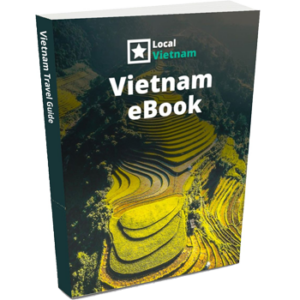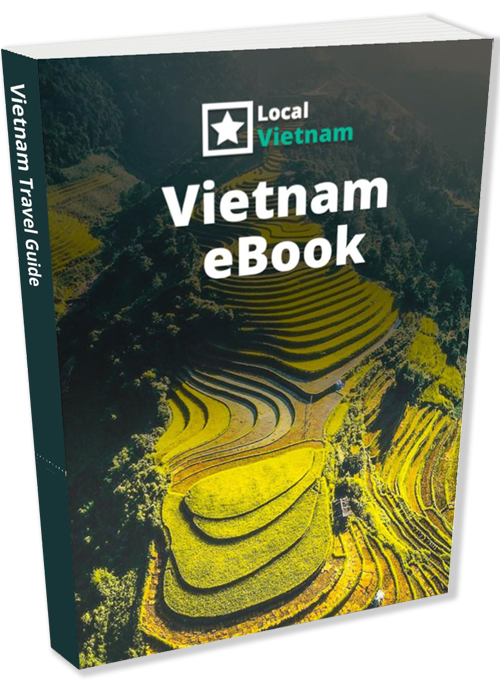Vietnam offers a diverse range of transportation options for travelers. Getting to Vietnam is convenient with its well-connected international airports and land border crossings. Once in Vietnam, you can explore the country using domestic flights, long-distance buses, trains, or even by driving a motorbike. Moving within cities is made easy with the availability of taxis and public buses, providing convenient and affordable options for getting around.
Getting to Vietnam
Transportation options for entering Vietnam include three main methods. The most common and popular way is by taking an international flight to one of Vietnam’s major airports. However, you also have the option of entering Vietnam by crossing the numerous land borders or even by arriving via cruise ships that dock at various ports in the country. Regardless of you choice of entering the country, you need to have a Vietnam visa arranged in advanced.
International flights to Vietnam
Vietnam has a total of 10 international airports. But most international flights to Vietnam typically arrive at one of the two major airports: Noi Bai International Airport in Hanoi, located in the north, and Tan Son Nhat International Airport in Ho Chi Minh City, situated in the south.
While Vietnam is a popular tourist destination, it is not as large of a hub compared to some other Asian countries. Therefore, travelers from countries like the US, Canada, Australia, or most European countries often need to make a transit at another airport as direct flights to Vietnam are relatively limited.
Read everything about: international flights to Vietnam.
Crossing land borders
Crossing land borders into Vietnam is possible as the country shares borders with China, Laos, and Cambodia. With a Vietnam e-visa, you can conveniently cross at the most popular border points, making it a good option if you are planning to also visit a neighboring country.
Read everything about:
Cruise / boats
Entering Vietnam by cruise or boat is a less popular method among tourists, but it is still a viable option. There are a few seaports in Vietnam that allow tourists to enter the country with an e-visa.
Getting around Vietnam
Getting around Vietnam offers a range of options. For longer journeys, domestic flights are a convenient choice. Bus travel provides excellent connectivity, with an extensive network and frequent routes, making it an affordable and the most popular option. Train travel is not always very convenient, but does offers a unique experience. For adventure-seeking travelers, driving a motorbike offers the thrill of exploring Vietnam’s landscapes at their own pace.
Domestic flights
Domestic flights in Vietnam are not only convenient but also highly affordable, with tickets available for as low as 30 USD. They are an excellent option to avoid lengthy bus journeys that can take over 6 hours between certain cities. Vietnam has a total of 22 domestic airports, and the three major domestic airlines that operate in the country are Vietnam Airlines, Vietjet Air, and Bamboo Airways.
Read everything about domestic flights in Vietnam.
Bus travel
Bus travel in Vietnam is an extensive mode of transportation, with a well-connected network that reaches all cities and towns. Various types of buses cater to different preferences, including regular buses, sleeper buses that operate during nighttime for added convenience, and upgraded options such as limousine and VIP buses that offer more comfort at a slightly higher cost. These choices make bus travel a popular and accessible option for exploring Vietnam’s diverse destinations.
Read everything about bus travel in Vietnam.
Train travel
Train travel in Vietnam offers a unique and safer alternative to buses, and provide a unique experience. However, it’s important to note that trains generally drive quite slow compared to road travel, so they may not be the fastest option. Nevertheless, trains provide a variety of choices, including day or night routes, different seating options like hard or soft seats, as well as sleeper cabins with 6 or 4 berths. Additionally, certain routes offer special tourist trains that prioritize comfort for a more enjoyable trip.
Read everything about train travel in Vietnam.
Motorbike
Traveling by motorbike in Vietnam is a popular choice, particularly among backpackers, as it offers a thrilling and unforgettable experience. However, it’s important to note that Vietnam’s roads can be challenging, and the country is known for its traffic and road safety issues. For those without experience, it is not recommended to ride a motorbike themselves. A safer alternative is to opt for “easy riders,” where local guides drive while travelers sit comfortably on the back, allowing them to enjoy the journey and take in the sights without the risks associated with riding a motorbike.
Read everything about driving motorbike in Vietnam.
Vietnam transportation in cities
Transportation within Vietnam’s cities offers a variety of options to suit different needs. Walking is a common way to navigate city centers, while taxi services provide convenient and readily available transportation. Public buses are a cost-effective mode of travel, and some cities, such as Hanoi and Ho Chi Minh City, are also working on a metro system.
Walking
Walking in Vietnam can be challenging as the streets are not always designed with pedestrians in mind. Sidewalks may not be well-maintained, and it is not uncommon to find motorbikes parked on them, forcing pedestrians to walk on the street itself. However, certain areas such as Hoi An, Hue, and countryside regions like Sapa, Mai Chau, and Ha Giang provide a more pedestrian-friendly environment, making walking a more enjoyable experience in these locations.
Taxi’s
Taxis are widely available and often considered the preferred mode of transportation for getting around cities in Vietnam. They are generally inexpensive and can be easily found throughout urban areas. While taxi scams can occur, the Vietnamese government has taken measures to combat this issue, making it relatively safer compared to some other countries. It is advisable to book with reputable taxi companies such as Mai Linh Taxi and Vinasun Taxi. Additionally, the use of taxi apps like Grab provides transparency in pricing and allows users to conveniently hail a ride.
Read everything about taxis in Vietnam.
Public buses
Public buses in Vietnam are an affordable and widely available mode of transportation, yet they are not frequently used by tourists. The language barrier can make navigating the bus system complicated for non-Vietnamese speakers, and many tourists opt for taxis as they offer a more convenient door-to-door service, and just being slightly more expensive.
Metro
Vietnam’s major cities Hanoi and Ho Chi Minh City, are currently in the process of building their metro networks. However, as these projects are still under construction, the current availability and coverage of the metro systems are limited, with only a few stations open.
Read everything about metros in Vietnam.
Other transportation in Vietnam
Boats & cruises
Boats play a limited role in Vietnam’s overall transportation infrastructure. You can find a few (speed)ferry connections to islands like Con Dao, Cat Ba, and Phu Quoc and some other smaller islands. However they are more being used for more leisurely experiences for tourists, such as exploring the Mekong Delta by boat or taking a cruise through Halong Bay.
Cycling
Cycling is not widely popular among locals in Vietnam, as it is often associated with lower socioeconomic status and students. The streets in Vietnam can be perceived as unsafe for cycling due to heavy traffic and a lack of dedicated cycling infrastructure. However, there are plenty of cycling opportunities in cities like Hoi An, Hue, Mai Chau, and the flat Mekong Delta region, where the countryside surroundings provide picturesque routes for cycling enthusiasts.
Read everything about cycling in Vietnam.
Cyclo ride
Cyclos, also known as cycle rickshaws, are a traditional mode of transportation in Vietnam and offer a unique and memorable experience for travelers. They are particularly popular in cities like Hanoi, Hoi An, Hue, and Nha Trang, where they provide a leisurely way to explore the city streets and take in the sights. Riding in a cyclo allows you to immerse yourself in the local atmosphere, enjoy the slower pace, and interact with the friendly cyclo drivers, making it a cool and authentic experience.
Read everything about cyclo in Vietnam

